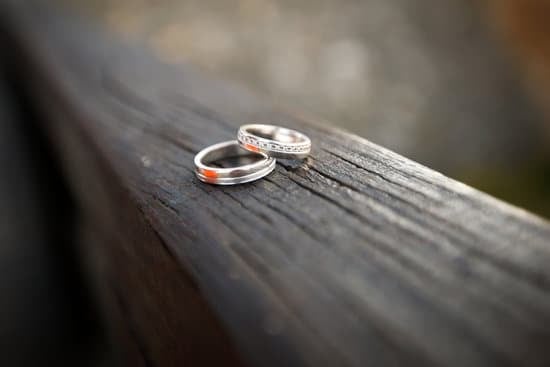Planning and coordinating a wedding ceremony is no small feat. From selecting the perfect venue to managing logistics and handling last-minute issues, there are countless details that go into ensuring a seamless and memorable experience for everyone involved. In this article, we will explore the essential elements of coordinating a wedding ceremony, providing valuable insights and tips for couples and wedding planners alike on how to coordinate a wedding ceremony.
Firstly, we will delve into the importance of a well-coordinated wedding ceremony. A cohesive and well-executed event sets the stage for an unforgettable celebration of love and commitment. Next, we will discuss the crucial aspects of choosing the ideal venue, coordinating the bridal party, creating a detailed timeline, and incorporating personal touches to create a unique atmosphere.
Additionally, music selection, audio management, working with an officiant, crafting meaningful vows, and managing logistics are all key components of successful coordination. We will also address crisis management – preparing for unexpected challenges to ensure that any last-minute issues are handled with grace and professionalism. Whether you’re planning your own wedding or coordinating one for someone else, understanding these important elements is essential for a smooth and successful celebration of love.
Setting the Stage
The venue is one of the most important aspects of a wedding ceremony, as it sets the tone and ambiance for the entire event. When considering how to coordinate a wedding ceremony, choosing the perfect venue is crucial. The first step in setting the stage for your ceremony is to decide whether you want an indoor or outdoor location. Consider factors such as the time of year, weather, and overall atmosphere you want to create.
Once you have decided on the type of venue, it’s important to visit several options and tour their facilities. Look for a venue that aligns with your vision for the ceremony and offers the amenities you desire. Some key factors to consider when choosing a venue include capacity, parking availability, rental costs, and any restrictions they may have in place.
In addition to these practical considerations, it’s essential to choose a venue that resonates with you as a couple. Whether it’s a historic mansion, beautiful garden, or modern loft space, the venue should reflect your personal style and create a meaningful backdrop for exchanging vows.
| Aspect | Consideration |
|---|---|
| Type of Venue | Indoor or outdoor |
| Facility Tours | Visit several options |
| Personal Style | Choose a venue that reflects your style as a couple |
Bridal Party Coordination
Coordinating a bridal party is a crucial aspect of planning a wedding ceremony. From the moment they walk down the aisle to the time they make their exit, the bridal party plays a significant role in the overall flow and ambiance of the event. Ensuring seamless communication and execution among this group is essential for a successful ceremony.
Assigning Responsibilities
Assigning specific responsibilities to each member of the bridal party is key to maintaining order and organization on the big day. Whether it’s ensuring that everyone has their bouquets and boutonnieres, helping to manage the train of the bride’s dress, or guiding guests to their seats, each member should have a clear understanding of their role.
Communication and Rehearsals
Open lines of communication are vital when it comes to coordinating a bridal party. Hosting rehearsals prior to the wedding day allows everyone to familiarize themselves with their roles and understand the sequence of events. It also provides an opportunity for any questions or concerns to be addressed, ensuring that everyone feels comfortable and confident in their responsibilities.
Support and Encouragement
In addition to fulfilling practical duties, members of the bridal party should also provide emotional support for the couple. Supporting each other through any pre-wedding jitters or last-minute nerves can make a significant difference in creating a relaxed and enjoyable atmosphere for everyone involved. Encouraging positivity within the group can further contribute to a smooth and memorable wedding ceremony experience.
By effectively coordinating the bridal party, you can ensure that your wedding ceremony runs smoothly and that every member feels informed, supported, and ready to contribute in making your special day unforgettable.
Timing Is Everything
Creating a well-structured timeline for your wedding ceremony is essential to ensure that everything runs smoothly on the big day. A detailed timeline will help you and your wedding coordinator keep track of important events, manage transitions, and avoid any unnecessary delays. Here’s how to create a comprehensive timeline for your ceremony.
Pre-Ceremony Activities
Start by outlining the pre-ceremony activities, such as hair and makeup for the bridal party, getting dressed, and any pre-wedding photos. Allow ample time for these tasks to avoid rushing and minimize stress.
Ceremony Start Time
Establish a clear start time for the ceremony and work backward from there to plan the preceding events. Consider factors such as transportation to the venue, guest arrival time, and any last-minute preparations that need to be done before the ceremony begins.
Order of Events
Outline the order in which key events will occur during the ceremony, including the processional, exchange of vows, ring exchange, readings or special performances, and recessional. Allocate specific time slots for each component to ensure that everything flows seamlessly.
Post-Ceremony Moments
After the ceremony concludes, there may be additional activities such as receiving lines, family photos, or transitioning to the reception venue. Factor in these post-ceremony moments when creating your timeline to account for a smooth transition into the next phase of your wedding day.
By carefully planning all aspects of your wedding ceremony and creating a detailed timeline, you can alleviate stress and feel confident that everything will unfold according to plan. It’s important to work closely with your wedding coordinator or planner throughout this process to ensure that every detail is accounted for. With a well-organized timeline in place, you can focus on embracing each moment of your special day without worrying about any logistical hiccups.
Decor and Design
When it comes to coordinating a wedding ceremony, decor and design play a crucial role in creating a memorable and visually stunning event. From the ceremony backdrop to the aisle decor, every detail contributes to the overall ambiance and aesthetic of the day. Here are some key considerations for incorporating personal touches and styling for a memorable ceremony:
- Theme and Color Palette: Choose a theme and color palette that reflects your personal style as a couple. Whether it’s rustic chic, vintage glam, or bohemian elegance, ensuring that every element of your ceremony decor ties in with your chosen theme will create a cohesive and visually impactful look.
- Personalization: Infuse elements of your love story and personalities into the decor. Consider incorporating photos, meaningful quotes, or objects that hold sentimental value to you as a couple. This could be displayed on signage, table centerpieces, or even as part of the ceremony backdrop.
- Floral Arrangements: Selecting the right floral arrangements can add an ethereal beauty to your ceremony space. Work with your florist to choose blooms that complement your color palette and theme while also reflecting the season of your wedding. From bouquets to altar arrangements, flowers can truly transform the ambiance of your ceremony.
By paying attention to these details, you can create a visually stunning setting that not only reflects who you are as a couple but also leaves a lasting impression on both you and your guests.
Ultimately, coordinating decor and design for a wedding ceremony requires thoughtful planning, attention to detail, and creativity. By carefully considering each element – from the theme and color palette to personalization and floral arrangements – you can ensure that every aspect of your ceremony reflects your unique style as a couple.
Whether it’s through DIY projects or working closely with vendors, taking the time to curate meaningful decor will result in a beautifully styled ceremony that sets the stage for an unforgettable celebration of love.
Music and Sound
When it comes to coordinating a wedding ceremony, music and sound play a crucial role in creating the perfect atmosphere for the occasion. From setting the mood as guests arrive, to accompanying the bridal party down the aisle, and creating an unforgettable moment during the exchange of vows, selecting the right songs and managing audio is essential. Here are some key considerations for ensuring that the music and sound at your wedding ceremony are coordinated seamlessly:
- Choose meaningful and appropriate songs: The selection of music for your wedding ceremony should reflect both your personal style as a couple and the overall theme of your special day. Whether you opt for classical pieces, modern love songs, or traditional hymns, each song should hold significance to you and create emotional impact.
- Work closely with your DJ or musicians: Communication is key when it comes to coordinating music and sound for your wedding ceremony. Collaborate closely with your chosen DJ or live musicians to curate a playlist that encompasses all key moments of the ceremony, from prelude music as guests take their seats to processional and recessional songs.
- Consider audio logistics: Beyond song selection, it’s important to consider audio logistics such as microphone setup for readings or vows, speaker placement for optimal sound distribution, and any technical requirements for live performances. Working with experienced professionals can help ensure that all audio needs are met without a hitch.
By paying attention to these details and working closely with your wedding coordinator or planner if you have one, you can create a harmonious blend of music and sound that enhances the beauty of your wedding ceremony.
Remember that every couple’s tastes are unique so remember to remain authentic when coordinating these elements. With careful planningand open communication with all vendors involved,you can create unforgettable memories on your big day.
Officiant and Vows
The selection of an officiant and the crafting of meaningful vows are crucial components of a well-coordinated wedding ceremony. Whether you choose a religious figure, a family member, or a friend to officiate your wedding, it is essential to establish open communication and clearly define expectations from the start.
When working with an officiant, it is important to discuss the tone and style of the ceremony, any specific customs or traditions that you would like to incorporate, and any legal requirements for marriage in your location. It’s also essential to provide guidance on how you envision the flow of the ceremony and any restrictions or preferences you may have regarding readings or speeches.
Crafting meaningful vows is a deeply personal aspect of the wedding ceremony that requires thoughtful consideration and collaboration between you and your partner. Take the time to reflect on your relationship, shared values, and future aspirations as a couple. Whether you choose to write your own vows or prefer traditional ones, ensure that they authentically reflect your love and commitment to each other.
Effective coordination with your officiant and attention to meaningful vows will undoubtedly enhance the emotional impact and significance of your wedding ceremony. By carefully considering these aspects early in the planning process, you can ensure that this pivotal moment truly reflects your unique bond as a couple.
| Officiant Coordination | Vows Consideration |
|---|---|
| Establish open communication | Reflect on relationship |
| Define expectations clearly | Discuss shared values |
| Provide guidance on ceremony tone and style | Craft authentic vows |
Managing Logistics
One of the first logistics to consider is transportation. When choosing a venue for your wedding ceremony, it’s important to think about how guests will arrive at the location.
Whether it’s providing shuttles, arranging parking, or giving clear instructions for rideshare services, ensuring that guests have easy and convenient access to the venue is essential. Additionally, if there are multiple locations for different parts of the ceremony (such as a separate location for the reception), coordinating transportation between these venues is also crucial.
Seating arrangements also play a vital role in managing logistics for a wedding ceremony. From assigning seats or creating a chart for open-seating events to ensuring that there are enough chairs available for all guests, careful consideration should be given to seating logistics. It’s important to create a comfortable and inclusive seating plan that takes into account any special accommodations needed for certain guests.
Finally, managing guest flow throughout the ceremony is essential for creating a seamless experience. This includes guiding guests to different areas of the venue (such as from the ceremony site to the reception area), providing clear signage or directions, and having staff or volunteers available to assist with any questions or concerns.
By carefully coordinating transportation, seating, and guest flow, couples can ensure that their wedding ceremony runs smoothly and that all their loved ones are able to fully enjoy this special day.
Crisis Management
Planning for a wedding ceremony involves numerous details and coordination efforts to ensure a seamless and memorable event. However, it’s also important to be prepared for the unexpected and have a plan in place to handle any last-minute issues that may arise. Crisis management is an essential aspect of coordinating a wedding ceremony, as it allows you to anticipate potential problems and address them effectively.
One of the key components of crisis management is having a contingency plan for various scenarios. Whether it’s unexpected weather conditions, supplier delays, or sudden changes in the schedule, having backup options and alternative solutions can help alleviate stress and minimize disruptions. For example, if there’s a chance of rain on the wedding day, it’s important to have a backup indoor location or a tent option available.
Effective communication is also crucial when it comes to crisis management during a wedding ceremony. Ensuring that all key stakeholders, including vendors, the bridal party, and family members are aware of the contingency plans can help prevent confusion and ensure everyone is on the same page. It’s also helpful to designate specific individuals who are responsible for managing different aspects of crisis response, such as coordinating with vendors or rearranging seating arrangements.
Lastly, maintaining a calm and adaptable demeanor is essential when handling last-minute issues during a wedding ceremony. Keeping a level head and being flexible in finding solutions will not only help ease any tension but also instill confidence in others that the situation is under control. By approaching unforeseen challenges with composure and resourcefulness, you can navigate through unexpected circumstances while still ensuring a beautiful and successful wedding ceremony.
Conclusion
Planning and coordinating a wedding ceremony is no small feat, but when executed with precision and attention to detail, the result can be a truly magical and unforgettable experience for everyone involved. Throughout this article, we have discussed the various elements that go into creating a well-coordinated wedding ceremony, from choosing the perfect venue to managing logistics and handling last-minute issues.
By understanding the importance of each of these components and approaching them with careful planning and organization, you can ensure that your wedding ceremony runs smoothly and leaves a lasting impression on all who attend.
One of the key takeaways from this discussion is the importance of effective communication and collaboration among all parties involved in the wedding ceremony. From the bridal party to the officiant to the vendors, clear communication and seamless coordination are essential for ensuring that everyone is on the same page and working towards a common goal. This also extends to communicating with guests about any logistical details or special instructions to help ensure their comfort and enjoyment throughout the event.
In conclusion, coordinating a wedding ceremony involves careful planning, attention to detail, and effective communication. By setting the stage with the perfect venue, coordinating timing and logistics, incorporating personal touches in decor and design, selecting the right music, working with your officiant on meaningful vows, and preparing for any unexpected issues that may arise, you can create a truly memorable experience for both yourselves as a couple and your guests.
With these insights into how to coordinate a wedding ceremony, you can approach the process with confidence and peace of mind knowing that you have taken all necessary steps to ensure a successful event.
Frequently Asked Questions
In What Order Does a Wedding Ceremony Go?
A typical wedding ceremony follows a specific order, beginning with the processional where the wedding party enters. This is followed by the opening words, readings, vows, ring exchange, pronouncement of marriage, and the recessional.
How Do You Organize a Wedding Ceremony?
Organizing a wedding ceremony involves coordinating various elements such as choosing a venue, setting a date and time, creating a guest list, selecting officiants or celebrants, deciding on readings or rituals, and planning the processional and recessional.
Who Walks Down the Aisle and in What Order?
Traditionally, in Western weddings, the procession order starts with the grandparents, followed by parents of the groom, then parents of the bride. The officiant usually enters next, followed by the wedding party – bridesmaids, groomsmen, maid of honor and best man. Lastly comes the bride escorted by whoever is accompanying her down the aisle.

I have been involved in marriages for over 20 years helping couples and singles understand more about them.





